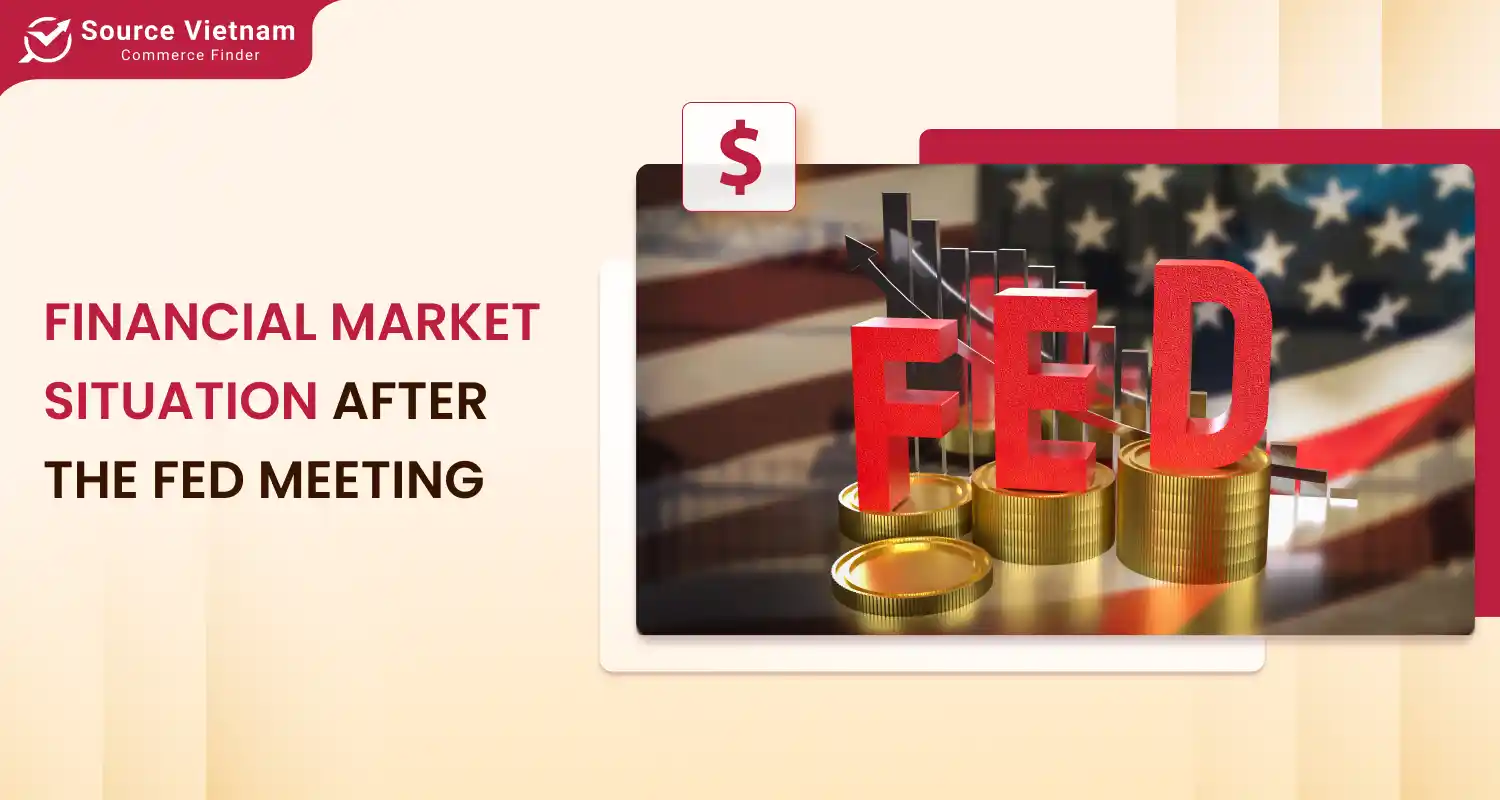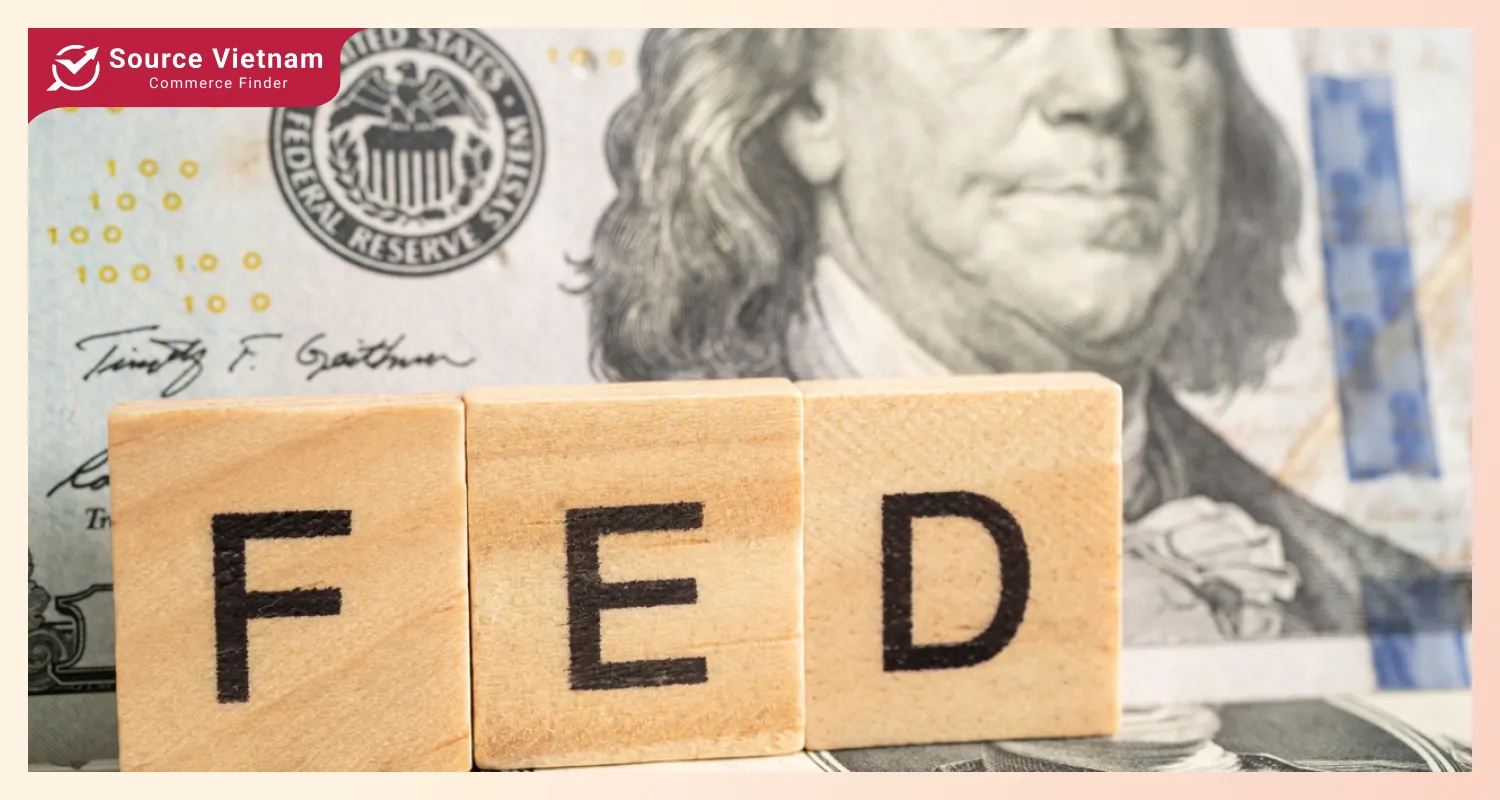Insight:
- After the FED meeting, the interest rate was cut by an additional 5%.
- Before this change, both the stock market, gold, and commodities will experience global changes.
The Fed has cut interest rates by an additional 0.5%
In September 2024, all eyes were on the Federal Open Market Committee (FOMC) policy meeting, the Federal Reserve’s policy-making body. After the two-day policy meeting, the FOMC and the Fed decided to cut interest rates by 50 basis points, bringing the current US federal funds rate to the range of 4.75% to 5%.

The decision was supported by 11 of the 12 FOMC members. Policymakers also assessed that the US economy would continue to grow well, inflation was on track to stabilize toward the 2% target, and the job market would not deteriorate excessively, although the unemployment rate could rise later this year.
Chairman of the U.S. Federal Reserve (FED), Jerome Powell, stated: “Today, the Federal Open Market Committee has decided to ease monetary tightening by lowering the policy interest rate by 0.5% points. This decision reflects our growing confidence that, with a proper recalibration of our policy stance, the strength of the labor market can be maintained amidst moderate growth and inflation falling to a sustainable level of 2%.”
Four key effects on the global economic and financial landscape
The decrease in the policy interest rate serves as a signal and guideline for other interest rates (savings, lending, and investment) to follow suit, thereby stimulating investment, consumption, and economic growth, creating jobs and income for people and businesses in the medium term.
This occurs while inflation is under control in the context of relatively stable global commodity prices in the recent past and the near future.

This contributes to lowering the overall interest rate level, reducing debt capital costs, and stimulating investment. The Fed’s interest rate cut motivates central banks of other major economies (except Japan) to continue the trend of lowering interest rates, thereby reducing the overall interest rate level and debt capital costs.
This is especially important in the context of high public and private debt levels in many countries, including the United States.
Lower interest rates help reduce debt repayment obligations and financial risks, while also stimulating new borrowing for investment, production, business, and consumption, thereby boosting growth.
By easing exchange rate pressures, the Fed’s interest rate cut has fostered a more reassuring sentiment among importers and investors. The subsequent depreciation of the US dollar has not only stimulated US exports but also alleviated exchange rate pressures on numerous currencies, including the Vietnamese Dong, which has appreciated.
This has contributed to lower import costs, reduced exchange rate risks, and bolstered confidence among importers and investors, including foreign direct investors. Indeed, the US dollar index has declined by 4.6% over the past three months, while currencies such as the Japanese Yen have appreciated by approximately 10% and the Vietnamese Dong by 3% against the US dollar (according to Bloomberg).
For the global stock market, in the short term, this aggressive interest rate cut by the Fed did not cause significant disruptions as it was conducted according to a predetermined path and was anticipated by the market.
Therefore, immediately following the Fed’s decision, the US and many other countries’ stock markets surged (due to meeting expectations), but then turned to decline slightly or increase insignificantly (US stock market indices fell by 0.25-0.3% on September 18th US time, the Shanghai Index decreased by 0.25% while the Nikkei 225 increased by 2%, and the Hang Seng gained 0.22%…).
This phenomenon can be explained by the fact that after the initial excitement subsided, the market became calmer, especially when seeing the Fed’s aggressive interest rate cut, which foreshadows a slowdown in US economic growth (although not a recession)… and so on.
How is the Vietnamese economy affected?
According to experts, the Fed’s decision to cut interest rates is a rather strong move. While typically they would only reduce rates by 0.25%, this time the Fed has aggressively cut by 0.5%, double the previous reductions.
For the first time in four years, the Fed has demonstrated a monetary easing stance with one of the goals being to stimulate the US economy.
This interest rate cut will have an impact on the Vietnamese economy. The narrowing of the interest rate differential between the VND and USD will reduce pressure on the exchange rate. Previously, when US interest rates were high and VND interest rates were low, there was a tendency for the VND to depreciate against the USD (upward pressure on the exchange rate).

Conversely, as the interest rate differential narrows, the pressure on the exchange rate decreases. According to experts, the VND is unlikely to face devaluation pressure from now until the end of the year.
This is beneficial for Vietnam’s foreign trade and investment at the import level. A stable exchange rate stabilizes import prices, thereby mitigating inflationary pressures. Conversely, while a non-appreciating exchange rate could theoretically be detrimental to exports, overall exports have still increased since the beginning of the year.
In general, a Fed rate cut will reduce exchange rate pressures, stabilize import prices, and ease inflationary pressures on the VND. The Fed’s rate cut helps to reduce upward pressure on the VND interest rate, thereby enabling the government and the State Bank to continue their stable interest rate programs and even implement additional interest rate cuts to support businesses and the economy.
In the short term, the Fed’s rate cut has a more positive impact on the Vietnamese economy and stock market than negative ones. Four notable impacts on the Vietnamese market can be mentioned:
- A global interest rate decrease is likely to stimulate consumer spending, investment, and business production, helping the world economy maintain and sustain its growth momentum.
- The decreased pressure on the exchange rate: the Fed’s interest rate cut will cause the US dollar to depreciate against most other currencies (including the VND), reducing the pressure on the USD/VND exchange rate.
- This contributes to stabilizing the interest rate level, and reducing borrowing costs and foreign currency investment costs for businesses in Vietnam.
- It also has a positive impact on the stock market and capital flows, especially foreign indirect investment.
However, given Vietnam’s open economy and the significant influence of the US economy on the global economy in general and the US-Vietnam economic relationship in particular, specific actions arising from the Fed’s easing policies and the potential for a hard or soft landing of the US economy will have a substantial impact on Vietnam.
Forecasting the FED’s outlook
Beyond the recent rate cut, the views of Federal Open Market Committee (FOMC) members suggest that the Fed may proceed with another 0.5% point interest rate cut in the remaining two meetings of 2024. Interest rates could be lowered by an additional 1.0% point in 2025 and by another 0.5% point in 2026.

The Fed’s initiation of an interest rate cut cycle, with a significant 0.5% point reduction, will have a certain impact on the money and stock markets. The weakening of the US dollar can be immediately observed.
Although the strength or weakness of the USD will depend on interest rate levels and the individual value of each currency relative to the USD, the USD is generally expected to depreciate against a basket of major currencies. This is beneficial for US investors who have foreign investments as the value of their investments can be converted into more US dollars.
This advantage also extends to US exporters. When countries import their goods, people there can buy American products at lower prices. However, it will be a disadvantage for goods exported to the US because the price of goods tends to be more expensive when reaching consumers here.
As for the stock market, the good news is that history has recorded since 1970 that, every 3 months after the first interest rate cut, the S&P 500 index will increase by an average of 5.5% in value, and after 1 year, it will increase by more than 11%.
Conclusion
The Federal Reserve’s monetary policy decisions not only impact the US economy but also create global ripple effects. Fluctuations in financial markets, investment flows, and exchange rates are direct consequences. However, the extent and speed of these impacts vary across countries and industries.















